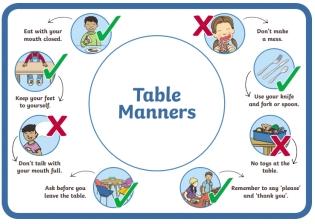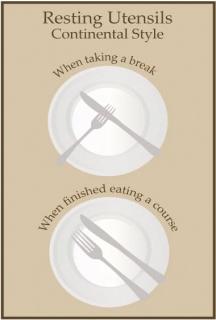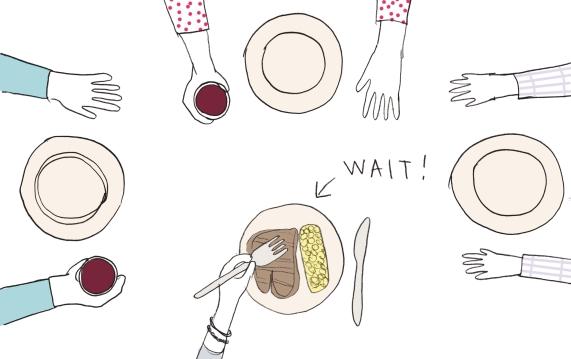
2 minute read
Lifestyle
A Guide to basic table manners
Table manners have changed over the course of the years, the main reason why table manners are important is to make the experience of eating with others pleasant. Different cultures observe different rules for table manners. Each family or household has their own rules and standards of table manners. With so many table manners to learn and practice, observe these basic but important table manners as you enjoy your meal with others.
Advertisement

Napkins: Once you’re seated on the dining table and before you begin eating remove the napkin from the table and place it on your lap. If you get up from your seat in between the meal, place the napkin on your seat instead of the table. Once you’ve finished eating, fold the napkin and place it on the left of your place setting.
Holding utensils: The continental style is a very common and widely accepted style of holding your utensils, at formal and casual meals. What is the continental style? Hold the fork in your left hand and the knife in your right hand. Using your left hand, hold the fork with its tines facing downwards and the knife in your right hand an inch or two above the plate. Extend your index finger and place it along the top of your knife’s blade.

Utensils to use: This can be confusing at times when there are different types and sizes of utensils set in front of you. To make this easier, use the outside in rule. Start your meal by using utensils on the outside for salad or appetizer and then work your way inward as you’re served with the
main course and dessert. Your drinking glasses are always placed on your right.
When to begin eating: At a small gathering, wait till everyone is served and then begin eating. In a formal set up or a large gathering wait for everyone to be served or when the hosts ask you to start eating.
Resting utensils: When you rest your utensils to take a sip of your drink or in between conversation make sure to place your utensils on your plate near the centre in an angled position, as shown in the diagram.

End of the meal: At a formal set up the plates are removed by professional staff but mostly at casual meals with little to no help the meals are served and removed from the table by hosts.
Time to leave: When it’s time to leave or say good bye make sure it’s short and courteous.





